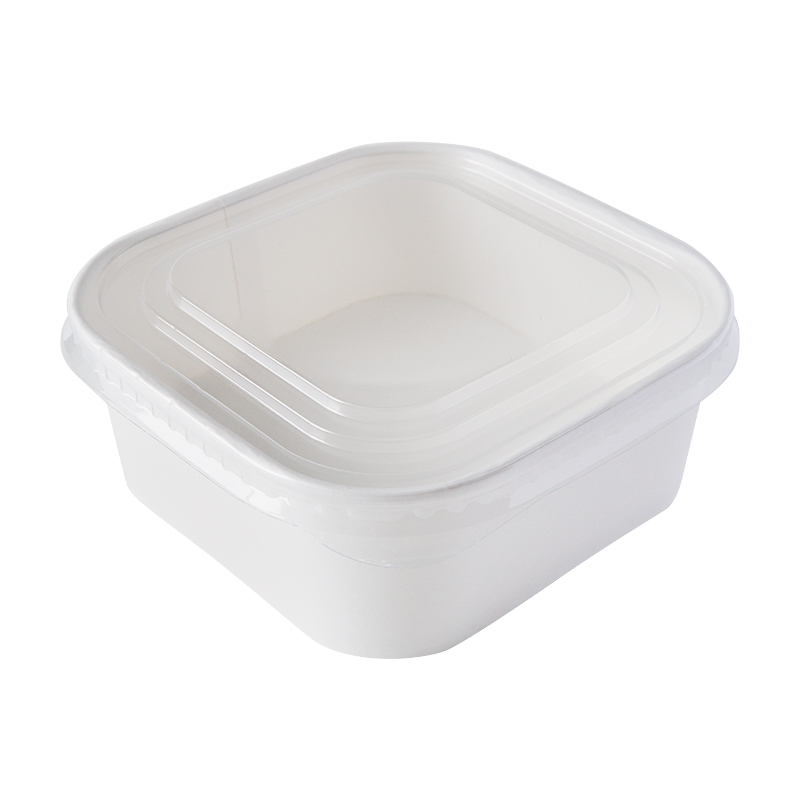
Takeout paper bowls have evolved from simple food containers to vibrant, sustainable staples of modern dining, blending practicality with environmental consciousness. Their “colorful” appeal lies not just in decorative designs, but in the diverse materials, sizes, and functionalities that cater to every takeout need—from hearty soups to fresh salads. As consumers and businesses prioritize sustainability, these bowls have emerged as a smarter alternative to plastic, offering convenience without compromising the planet.
At the core of takeout paper bowls’ popularity is their eco-friendly design. Unlike plastic containers that linger in landfills for centuries, most paper bowls are crafted from renewable resources like recycled paper, bamboo fiber, or sugarcane bagasse (a byproduct of sugar production). These materials are biodegradable or compostable, breaking down naturally without releasing harmful toxins into soil or water. Many paper bowls also use plant-based liners (such as PLA or beeswax) instead of plastic coatings, ensuring the entire container is environmentally responsible—even when holding wet or greasy foods like noodles, curries, or fried items.
Practicality is another key strength of takeout paper bowls. They are lightweight yet sturdy, designed to withstand the weight of generous portions without leaking or collapsing. Most feature a tapered shape for easy stacking, saving space in kitchens, delivery bags, and storage areas. Sizes range from small bowls for appetizers or desserts to large, deep containers for family-style meals, making them versatile for restaurants, cafes, food trucks, and meal-kit services. Some paper bowls come with matching lids—often made from paper or compostable plastic—that lock securely to prevent spills during transport, ideal for busy commuters or delivery orders.
Takeout paper bowls also offer functional benefits that enhance the dining experience. Many are microwave-safe (when labeled), allowing consumers to reheat meals without transferring to another container. Insulated options feature double-layered paper construction, keeping hot foods warm and cold foods chilled for longer periods—perfect for soups, stews, or salads. The natural paper material also ensures no chemical flavors leach into food, preserving the taste and quality of dishes. For businesses, customizable designs (from minimalist to vibrant prints) add a personal touch, helping brands stand out while aligning with sustainable values.

The versatility of takeout paper bowls extends across countless dining scenarios. Restaurants and cafes rely on them for dine-in leftovers and delivery orders, reducing plastic waste while meeting customer demand for eco-friendly options. Food trucks and street vendors appreciate their portability and affordability, serving everything from tacos to rice bowls in durable, disposable containers. Meal-kit companies use paper bowls to package pre-portioned ingredients, ensuring freshness while minimizing environmental impact. Even at home, families use them for casual meals, potlucks, or outdoor gatherings, enjoying the convenience of no-wash cleanup without the guilt of plastic waste.
When selecting takeout paper bowls, several factors should be considered. For wet or greasy foods, look for bowls with leak-proof, plant-based liners to prevent seepage. Microwave safety is essential for consumers who reheat meals, so check for clear labeling. Size should match the intended use—small bowls for snacks, medium for individual meals, and large for sharing portions. Sustainability credentials, such as certifications for recycled content or compostability, help ensure the bowl meets environmental standards. For businesses, stackability and lid compatibility are key for efficient storage and delivery.
The rise of takeout paper bowls reflects a broader shift toward sustainable dining, driven by growing awareness of plastic pollution. Governments and cities worldwide are implementing bans on single-use plastics, making paper bowls a necessary and popular alternative. As manufacturing techniques advance, paper bowls are becoming more affordable, durable, and innovative—with new materials like mushroom mycelium or seaweed-based fibers emerging to further reduce environmental impact.


